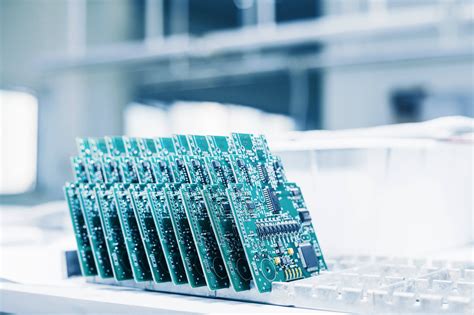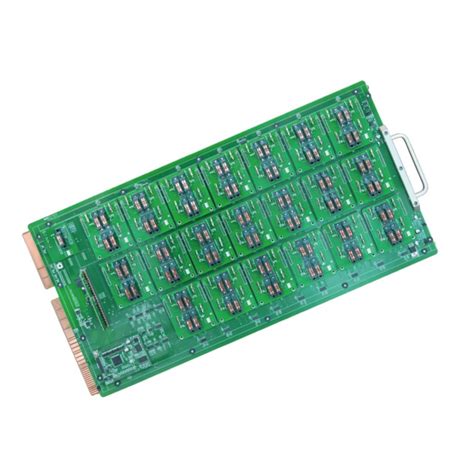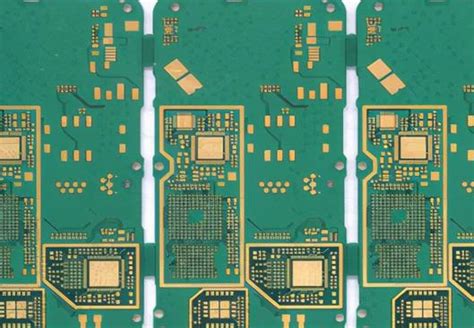Understanding Circuit Board Assembly: A Comprehensive Guide
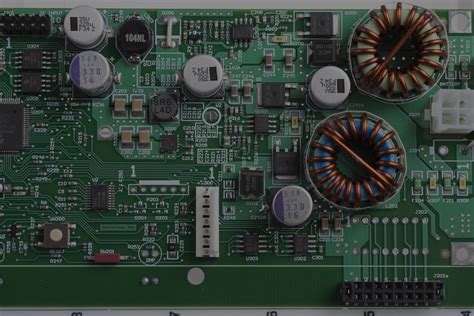
Key Takeaways
Understanding pcb assembly is vital for anyone involved in electronics manufacturing. This process, which consists of various stages such as design, fabrication, and assembly, is critical for creating efficient and effective electronic devices. One of the most significant aspects of pcba is the selection of essential materials, which include copper substrates, solder paste, and various electronic components. Each material plays a pivotal role in determining the overall quality and functionality of the final product. Moreover, familiarity with key processes—such as surface mount technology (SMT) and through-hole assembly—enables manufacturers to optimize production efficiency while minimizing errors.
In addition to materials and processes, employing effective techniques is crucial for successful circuit board assembly. Techniques like automated optical inspection (AOI) help ensure that every component is correctly placed and soldered, enhancing reliability. Another important factor in pcb assembly is implementing rigorous quality control measures to catch potential defects early in the production cycle. By understanding and addressing common challenges—such as thermal management or component obsolescence—engineers can significantly improve the durability and performance of circuit boards.
Finally, staying updated with innovations and trends in circuit board technology can provide manufacturers with a competitive edge. The applications of pcba extend across multiple industries—from consumer electronics to aerospace—demonstrating its versatility and importance in today’s interconnected world. Understanding these elements will empower professionals to contribute effectively to the field of electronics manufacturing.
Introduction to Circuit Board Assembly
The world of PCB assembly is both intricate and fascinating. At its core, circuit board assembly involves the meticulous integration of electronic components onto a printed circuit board (PCB), forming the backbone of most electronic devices. From smartphones to sophisticated medical equipment, the efficiency and effectiveness of PCBA directly impact overall functionality. Understanding this process means delving into various phases, such as component placement, soldering techniques, and testing methods that assure quality.
Various essential materials play a significant role in achieving successful circuit board assemblies. High-quality substrates such as FR-4, along with numerous types of solder and protective coatings, are critical in ensuring longevity and reliability. Also noteworthy is the need for precise alignment when placing components; even a minor miscalculation can lead to significant malfunctions.
Moreover, technological advancements have introduced innovative techniques designed to enhance productivity while maintaining high-quality standards in circuit board production. Automated processes are now commonplace, facilitating the rapid deployment of assemblies and drastically reducing human error.
In sum, grasping the complexities of circuit board assembly is fundamental for anyone involved in electronics manufacturing. The industry’s continual evolution not only reflects advancements in technology but also highlights the importance of effective design and engineering practices that drive innovation across multiple sectors. Understanding these core aspects helps stakeholders ensure that they produce efficient PCBA, ready to support a myriad of applications in today’s fast-paced world.

Essential Materials for Circuit Board Assembly
In the realm of pcb assembly, the selection of materials plays a pivotal role in determining the overall performance and reliability of the final product. The foundational component of any pcba is the substrate material, typically made from fiberglass or epoxy resin, which provides physical and thermal insulation for electrical pathways. Alongside the substrate, various types of copper foil are applied to create conductive paths, essential for transmitting signals and power between electronic components.
Additional materials include solder, which is crucial for securing components onto the circuit board, and can come in various forms including lead-free options to meet environmental standards. Next are capacitors, resistors, and integrated circuits, each serving specialized functions within an electronic device. As we explore these materials, it’s essential to consider their specifications to ensure compatibility with your design requirements.
“Selecting high-quality materials not only enhances performance but also improves durability and resistance against environmental factors.”
Moreover, various chemicals are involved in the surface treatment of circuit boards, such as solder masks and surface finishes that aid in preventing oxidation and ensuring better soldering conditions during assembly. Understanding these materials lays a solid foundation for anyone looking to delve deeper into circuit board design and assembly techniques, enabling efficient production of reliable electronic devices across a multitude of applications. By thoughtfully choosing each component within the pcb assembly process, manufacturers can optimize performance while adhering to industry standards.
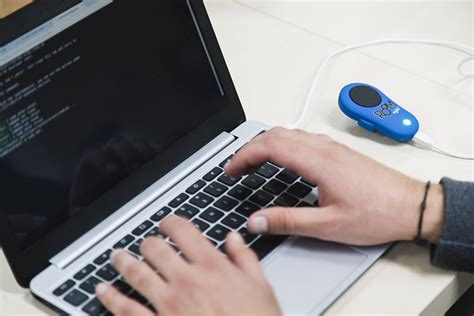
Key Processes in Circuit Board Manufacturing
The process of pcb assembly involves several crucial steps that ensure the creation of a high-quality printed circuit board assembly (PCBA). Initially, the design is translated into a physical layout, which includes the arrangement of components and traces that connect them. This layout is then transformed into a physical board, typically through processes like etching and laminating layers. A pivotal step in pcb assembly is the application of solder paste, where precision is vital; this paste adheres electronic components to the board during reflow soldering. Afterward, component placement machines accurately position components on the board to ensure optimal performance. Once assembled, the circuit boards undergo testing procedures to confirm functionality and reliability before being packaged for delivery. Each stage leverages advanced technologies and methodologies aimed at enhancing efficiency and maintaining quality control. Ultimately, understanding these foundational processes in pcba helps in recognizing how they contribute to the innovation and effectiveness of electronic devices across multiple industries.
Techniques for Efficient Circuit Assembly
The world of pcb assembly relies on a multitude of techniques that enhance both efficiency and effectiveness in the production of printed circuit board assemblies (PCBA). One of the foundational techniques is surface mount technology (SMT), which allows for increased component density on a circuit board assembly. This method not only streamlines the placement process but also reduces the physical space required for components, leading to more compact designs.
Furthermore, the use of automated assembly lines has revolutionized how we approach pcba production. With systems designed to integrate pick-and-place machinery, soldering processes, and inspection stages—often through automated optical inspection (AOI)—manufacturers can significantly speed up production while maintaining high standards of quality.
Another key technique is selective soldering, which presents an alternative to traditional wave soldering by targeting only specific areas requiring solder. This method not only minimizes damage to other components but also conserves materials, contributing to both cost efficiency and reduced waste.
| Technique | Benefits | Considerations |
|---|---|---|
| Surface Mount Technology | Higher component density; smaller designs | Requires precise placement |
| Automated Assembly Lines | Increased speed; consistent quality | Initial setup cost can be high |
| Selective Soldering | Reduces material waste; targeted application | Slower than wave soldering |
The integration of these techniques illustrates how advancements in circuit board assembly processes drive improvements in production capabilities. As challenges arise within this fast-evolving field, embracing innovative assembly methods ensures that manufacturers can meet the demands of varied applications and industries while maintaining optimal functionality in their pcba solutions.
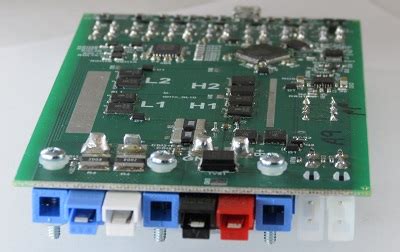
Quality Control in Circuit Board Production
Quality control is a critical component in the pcb assembly process, ensuring that every stage of pcba manufacturing meets stringent standards. During production, multiple checks are implemented to verify the integrity and functionality of the circuit boards. One essential aspect of quality control involves visual inspections, where technicians examine each board for defects such as misaligned components or soldering errors. Additionally, automated inspection systems may utilize cameras and machine learning algorithms to detect any anomalies more efficiently.
Another crucial method in maintaining high quality is the use of rigorous testing procedures. These include electrical testing to validate connectivity and functionality while ensuring that each pcb assembly adheres to design specifications. Functional tests are also performed to simulate real-world applications, guaranteeing that the assembled boards can perform their intended tasks under various conditions.
When it comes to materials used in pcba, quality control extends to suppliers as well, requiring them to meet specific performance criteria for all components. This practice helps reduce the risk of failure due to inferior materials which could compromise the electric circuitry’s efficiency and reliability.
Furthermore, feedback mechanisms are essential in a robust quality control system. Manufacturers often rely on data collected from previous batches to inform continuous improvements in both processes and materials used during circuit board assembly. By adopting these proactive measures, companies can ensure high-quality standards, ultimately leading to more successful product launches and satisfied customers across various industries.
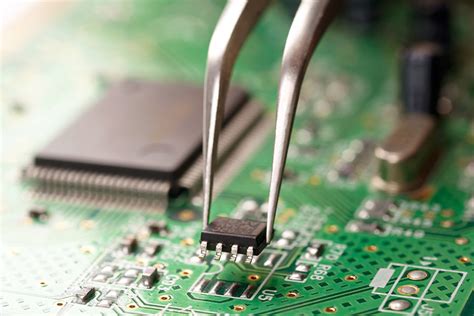
Common Challenges in Circuit Board Assembly
The process of pcb assembly can be intricate and challenging, often presenting several obstacles that must be effectively managed to ensure a successful end product. One of the most significant challenges encountered during pcba is achieving the right balance between component placement and circuit design. Improper alignment or overcrowding can lead to soldering issues, ultimately affecting the overall functionality of the circuit board. Furthermore, variations in component specifications can contribute to inconsistencies during assembly, making it crucial for manufacturers to maintain rigorous quality control measures.
Another challenge lies in the selection of appropriate materials for both components and substrates. Materials that do not meet thermal or electrical requirements can drastically impact performance, leading to potential failures in operation. As technology advances, pcb assembly methods have adapted; however, ensuring compatibility between new materials and traditional assembly techniques remains a concern.
Additionally, the rapid pace of technological innovation presents an ongoing challenge for pcba manufacturers. Keeping abreast of emerging trends and updating processes can require significant investment in training and equipment, which not all companies are prepared to undertake. To remain competitive while navigating these challenges, it is essential for organizations to embrace flexibility and adaptability in their production strategies.
Lastly, achieving consistent quality across batches poses another hurdle. Variability in manufacturing processes can result in discrepancies that jeopardize product reliability. As a result, implementing robust testing protocols throughout the pcb assembly process is essential to identify defects early and reduce potential losses down the line. Addressing these challenges effectively is critical for ensuring high-quality electronic circuitry that meets evolving industry standards and demands.
Innovations and Trends in Circuit Board Technology
The landscape of pcb assembly is experiencing rapid transformations, driven by advancements in technology and an increasing demand for more efficient and compact devices. One significant trend in pcba is the integration of artificial intelligence and automation into the assembly process, enabling manufacturers to enhance productivity while minimizing errors. The incorporation of smart manufacturing techniques facilitates real-time monitoring and adjustments, leading to higher quality outputs. Additionally, the shift towards flexible printed circuit boards (FPCBs) allows for innovative designs that conform to various shapes and sizes, making them ideal for modern electronics. Another noteworthy advancement is the movement towards green manufacturing practices, focusing on sustainable materials and processes that reduce environmental impact without compromising performance. Furthermore, the rise of the Internet of Things (IoT) has spurred innovations that require densely packed components on circuit boards, necessitating more intricate pcb assembly techniques. With these trends at play, it becomes clear that the future of circuit board technology promises to be both exciting and complex as it adapts to meet contemporary electronic demands.
Applications of Circuit Boards Across Industries
Circuit boards are pivotal in a multitude of sectors, serving as the backbone for a vast array of electronic devices. From consumer electronics like smartphones and laptops to critical medical equipment such as imaging devices and monitors, pcb assembly plays an integral role in ensuring functionality and performance. In the automotive industry, pcba technology supports advanced driver-assistance systems (ADAS), enhancing safety through real-time data processing and communication systems. Additionally, in telecommunications, circuit boards enable rapid data transfer through smartphones and networking equipment, streamlining connectivity in an increasingly digital world.
Moreover, the growing demand for smart home devices showcases the versatility of circuit board assembly. Appliances integrated with smart technology rely heavily on efficient pcba techniques to operate seamlessly, allowing users to control various functions from their mobile devices. In industrial applications, circuit boards are essential for automation systems that improve efficiency and precision in manufacturing processes. Overall, the multifaceted applications of circuit boards illustrate their importance across different industries; they not only enhance technological capabilities but also drive innovation in electronic design and application development. Whether it’s wireless communication or cutting-edge medical technologies, pcb assembly continues to evolve, meeting the diverse needs of modern consumers and industries alike.
Conclusion
In summary, the process of pcb assembly should not be underestimated, as it forms the backbone of modern electronics. Understanding the intricacies involved in pcba—from selecting the right materials to implementing effective techniques—can significantly influence the performance and longevity of electronic devices. A successful circuit board assembly involves not only precise manufacturing processes but also rigorous quality control measures to address challenges that may arise during production. As industries increasingly rely on advanced circuit board technology, staying informed about current innovations can position manufacturers for future success. With applications spanning various sectors, including telecommunications, medical devices, and consumer electronics, mastering pcb assembly techniques will be crucial for meeting diverse customer needs while maintaining high standards of efficiency and reliability. As we conclude this guide, it is clear that a thorough understanding of these essential components and processes is vital for anyone involved in the design and manufacturing of electronic circuitry.
FAQs
What is pcb assembly?
PCB assembly, commonly referred to as PCBA, is the process of soldering electronic components onto a circuit board, transforming it into a functional electronic device.
What materials are used in pcb assembly?
The materials essential for pcba include the PCB itself, which is typically made of fiberglass, epoxy resins, or thermoplastics, along with various electronic components such as resistors, capacitors, and integrated circuits.
What are the key processes involved in circuit board assembly?
Key processes in pcb assembly include surface mount technology (SMT), through-hole technology, and manual assembly methods. These processes ensure that all components are accurately placed and securely soldered.
How can quality control be ensured during the pcba process?
Quality control in circuit board production is achieved through several means, including automated optical inspection (AOI), functional testing, and adherence to industry standards such as IPC-6012 to guarantee the performance and reliability of the assembled boards.
What challenges could arise during circuit board assembly?
Common challenges in pcb assembly include component misalignment, soldering defects, and difficulties with heat dissipation. Effective planning and quality assurance measures can mitigate these issues.



